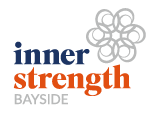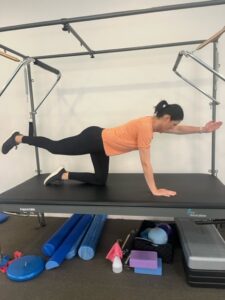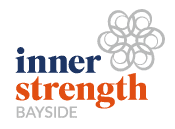What Is An Abdominal Muscle Separation Post Child Birth (DRAM)?
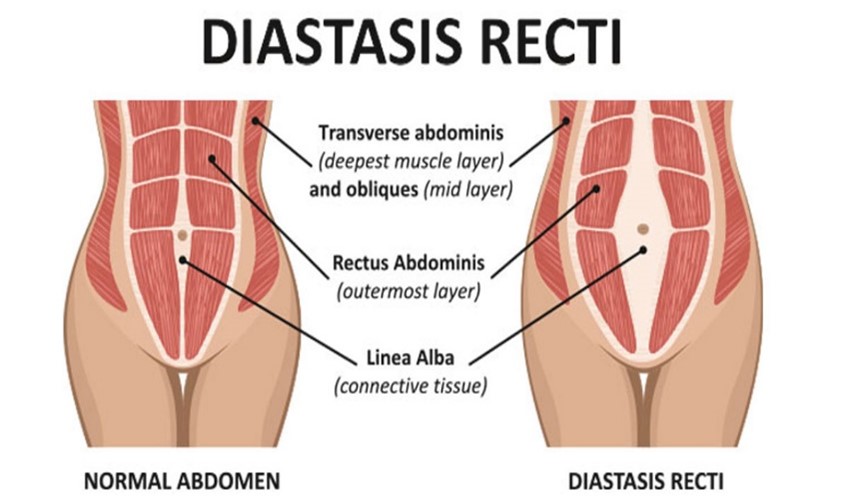 What is a DRAM?
What is a DRAM?
Diastasis Rectus Abdominis Muscle (DRAM) is the stretching of the two rectus abdominus muscles at the midline, also known as the linea alba. This is a healthy body’s normal physiological change, which occurs typically during the second and third trimester of pregnancy as the body allows room for the baby to grow.
What Causes DRAM?
The female body undergoes amazing changes to facilitate making room for the growing fetus. Throughout pregnancy, hormones are released to soften and stretch the body’s abdominal tissues (linea alba) to accommodate the growth of the baby. This is a normal and healthy process, that 100% of pregnant women will experience in their 3rd trimester of pregnancy.
How Can I Tell If I Have DRAM?
You may see or be able to feel a gap down the midline of your outer abdominal muscles, especially when your abdominals are contracted. Often with a DRAM, many women may also feel weakness in their abdominal muscles and and poor posture. There is no evidence to suggest that a DRAM will lead to lower back pain.
You can also perform a simple at home test to assess for a DRAM
- Lie on your back with knees bent. Place two fingers over your belly button (naval).
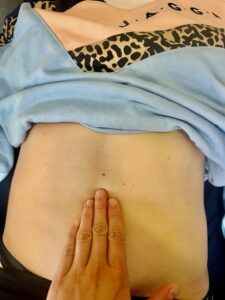
- Lift your shoulders and head off the floor to perform an abdominal crunch.
- Maintain the abdominal crunch, whilst pressing your two fingers down in between your left and right abdominal muscles. Feel to assess a gap between these muscles.
A gap greater than two finger widths, is an indication of a DRAM.
Exercises To Perform To Help DRAM Recovery
As every female body is different, it is important to have an individual exercise program tailored to you. Whilst certain core exercises can improve a DRAM, some can make it worse.
Things to avoid to prevent straining your abdominal muscles:
It is recommended to avoid certain movements that may strain your abdominals for two months post partum, or until being cleared by your Physiotherapist. Movements that place strain on your abdominal muscles can make the DRAM worse long term, including:
- Sitting up directly from lying (instead, try log rolling onto your side first)
- Pushing or lifting heavy objects (lift nothing heavier than your baby for 6 weeks after delivery)
- Avoid heavy housework, heavy lifting, heavy pushing or pulling, and heavy cleaning
- Avoid heavy weights at the gym
- Avoid vigorous abdominal exercises until you’ve been assessed safe to do so by your Physiotherapist
Staying active through Clinical Pilates exercises throughout pregnancy has been linked to a reduced DRAM. Throughout pregnancy, it is important to avoid exercises which cause excessive strain to the abdominal tissues. Certain exercises or movements which strain the abdominal muscles can worsen the DRAM and change its appearance by putting extra pressure on the softened connective tissue (linea alba) – this can cause “conning” or “doming”.
What Is Abdominal “Conning” or “Doming”?
Abdominal doming is when your outer abdominals (rectus abdominis) become dominant over your deeper layer of core muscles. Doming occurs when there is poor control of all abdominal muscles working together, resulting in a bulging appearance of your tummy ie. when sitting up from lying. Doming is due to reduced control of intra abdominal pressure upon exertion. Doming can be a physical sign of a DRAM, but not the same thing as a DRAM.
What can I do to help DRAM recovery?
Wearing abdominal supports or abdominal binders during the day and for 6 weeks after giving birth has been shown to improve DRAM recovery in the short term.
Exercises to help with abdominal recovery post partum
Each body is different, and there is no right exercise for everyone to begin. Although it was previously thought to avoid abdominal crunch exercises as they can “strain” your abdominal muscles, current research tells us that crunches can be very beneficial to DRAM recovery. A recent study by Diane Lee and Paul Hodges (2016) suggested that when post partum women perform a crunch, the rectus abdominis (six pack muscle) draws in closer together while the linea alba is slack. In contrast, when women perform a simple transverse abdominis activation (“flatten your back” “draw your belly in to your spine”), the rectus abdominis widens and the linea alba tightens. However, if the transverse abdominis is activated in conjunction with an abdominal crunch, the linea alba is at an optimal tension and the abdominals are at there most efficient function.
Come in for an individualized post-natal assessment by our Physiotherapists here at Inner Strength Bayside to help you to begin with gentle exercises on your journey to become stronger. Click Here to book online.
Written by Petra Ruhl, Physiotherapist
References
- Mota PG, Pascoal AG, Carita AI, Bø K. Prevalence and risk factors of diastasis recti abdominis from late pregnancy to 6 months postpartum, and relationship with lumbo-pelvic pain. Manual therapy. 2015 Feb 1;20(1):200-5.
- Boissonnault JS, Blaschak MJ. Incidence of diastasis recti abdominis during the childbearing year. Physical therapy. 1988 Jul 1;68(7):1082-6.
- Corvino A, De Rosa D, Sbordone C, Nunziata A, Corvino F, Varelli C, Catalano O. Diastasis of rectus abdominis muscles: patterns of anatomical variation as demonstrated by ultrasound. Polish Journal of Radiology. 2019 Dec 15;84:542-8.
- Lee D, Hodges PW. Behavior of the linea alba during a curl-up task in diastasis rectus abdominis: an observational study. journal of orthopaedic & sports physical therapy. 2016 Jul;46(7):580-9.
- Gilleard WL, Brown JM. Structure and function of the abdominal muscles in primigravid subjects during pregnancy and the immediate postbirth period. Physical therapy. 1996 Jul 1;76(7):750-62.
